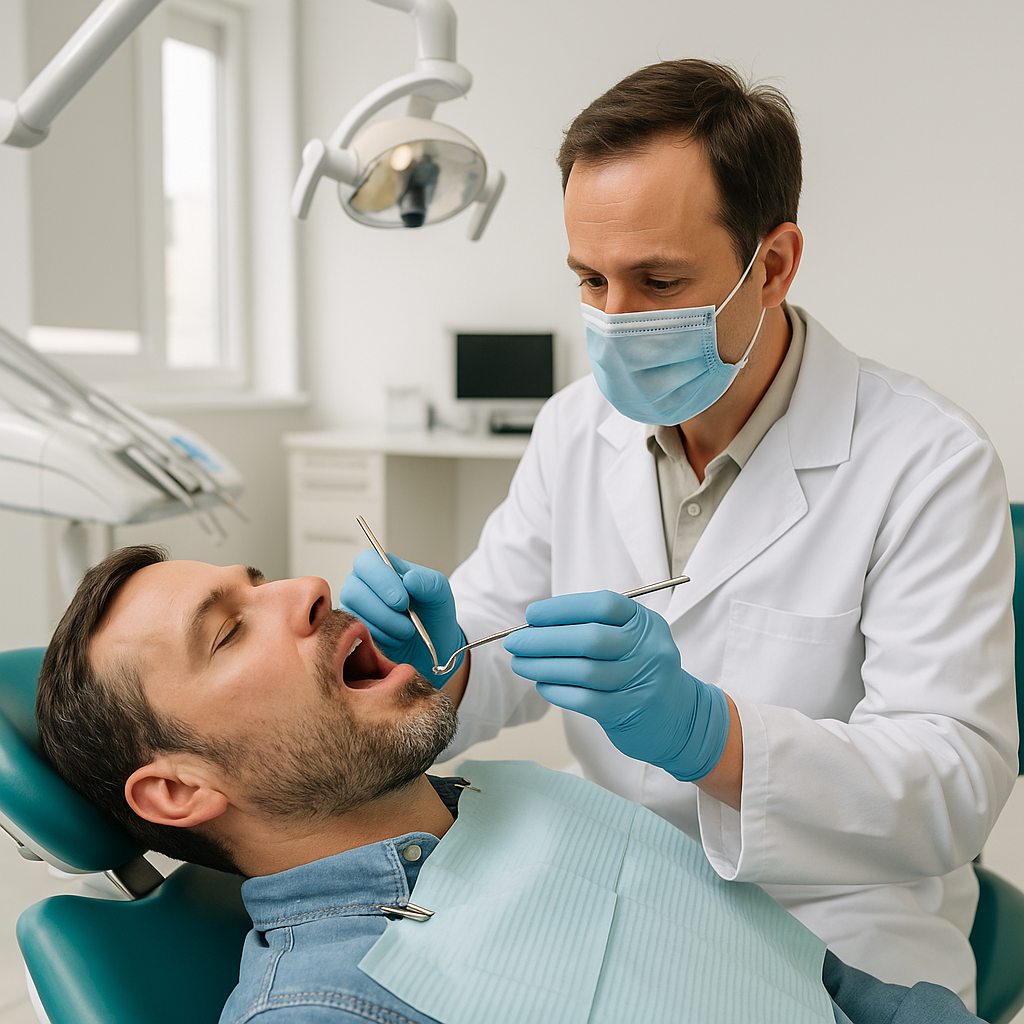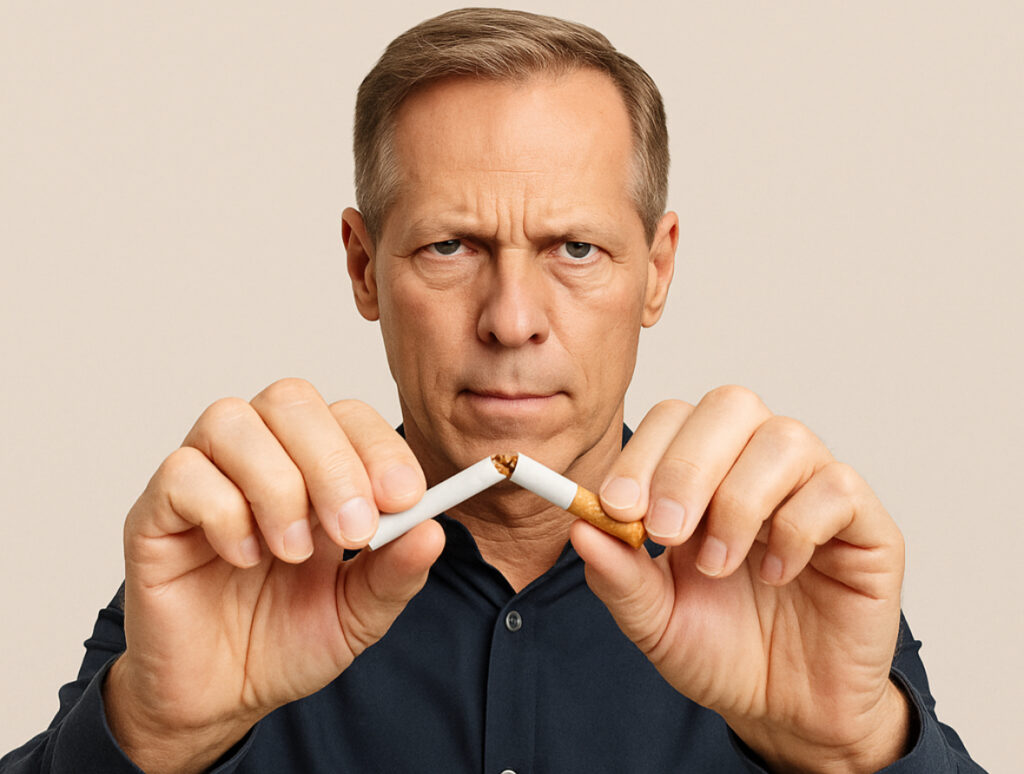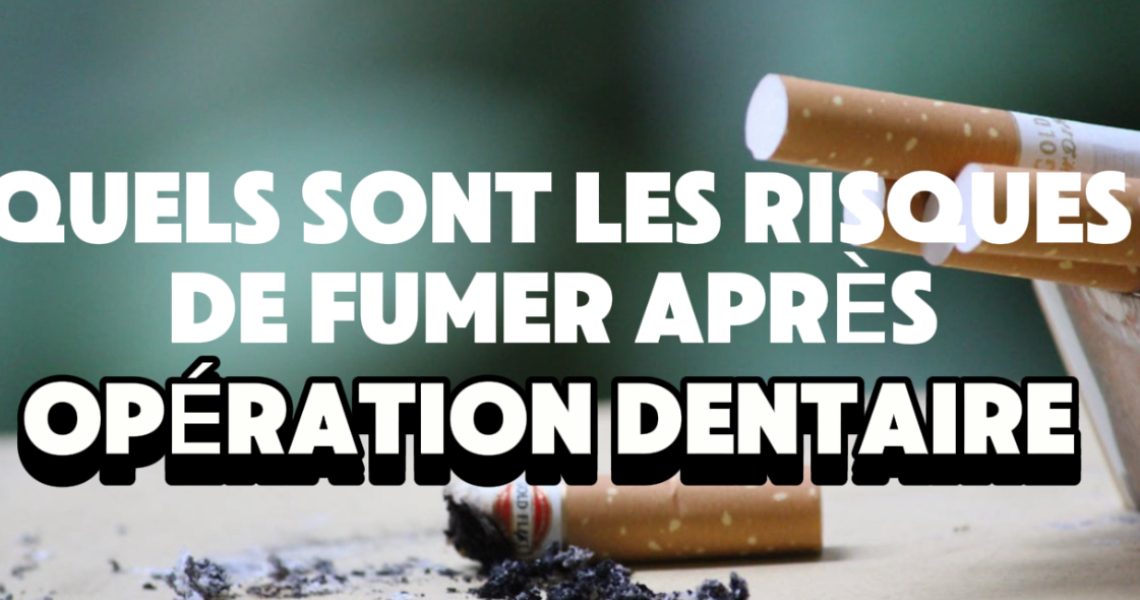Dental extractions are a common surgical procedure in dentistry, whether to remove a wisdom tooth, an infected tooth or a tooth too damaged to be repaired. However, this procedure, although performed under anesthesia and with care, involves a delicate healing process that can be severely compromised by smoking. This article explores the implications of tooth extraction, the risks associated with smoking after the procedure, and the precautions to take to ensure optimal healing.

Understanding tooth extraction and its implications
1. The surgical procedure
A tooth extraction is necessary when the tooth can no longer be retained, or when its presence compromises oral health. Here are the most common cases:
- Wisdom teeth: often removed due to lack of space or pain caused by faulty growth. In many cases, these partially erupted teeth can lead to recurrent infections requiring emergency surgery.
- Infection or advanced decay: when the tooth is too degraded to be restored. Untreated infected teeth can spread bacteria into the bloodstream, causing serious systemic complications.
- Orthodontic problems: to free up space in the dental arch. This step is sometimes essential to guarantee the effectiveness of orthodontic treatment and ensure proper occlusion of the jaw.
The procedure, performed under local or general anaesthetic, involves removing the tooth from its bony socket. The procedure may involve incising the gums and, in some cases, cutting the tooth into several parts to facilitate removal. Well-executed surgery considerably reduces the risk of post-operative complications.
2. The healing process
Healing after tooth extraction follows several crucial stages:
- Blood clot formation: acts as a natural barrier to prevent infection and limit bleeding. The clot also protects exposed nerve endings.
- Tissue regeneration: the gums begin to cover the wound. This phase may be accompanied by a slight tugging sensation in the jaw.
- Bone repair: the jawbone gradually reforms to fill the socket. This process can take several months, depending on the complexity of the operation.
This period can last several weeks. Any disturbance, such as smoking or vaping, can delay or compromise this process. The first few hours after surgery are particularly critical for stabilizing the clot and initiating effective healing.
3. Medication and post-operative care
After an extraction, your dentist may prescribe :
- Antibiotics: to prevent infections, particularly if the procedure was complex or if the patient has risk factors such as a weakened immune system.
- Analgesics: to relieve pain and reduce swelling. Post-extraction pain can vary in intensity depending on individual sensitivity and the nature of the operation.
- Mouthwash: antiseptic, to be used with care to avoid dislodging the clot. Mouthwashes may be recommended to prevent bacterial proliferation around the wound.
Strict adherence to these instructions is crucial to avoid complications. Any unusual symptoms, such as prolonged bleeding or unbearable pain, should be reported to the dentist immediately.
You may also be interested in this article: Anti-smoking and addiction laser training, become your own boss.
The risks of smoking after a dental extraction
1. Impaired wound healing
Smoking after extraction directly interferes with blood clot formation and stability. The suction exerted during inhalation can dislodge the clot, causing dry socket. This painful condition exposes the underlying bone and nerves, considerably delaying healing. Patients often describe this pain as throbbing and difficult to relieve with conventional analgesics.
2. Increased risk of infections
Cigarette smoke contains toxins that weaken tissues and reduce their ability to defend against infection. Patients who smoke have a higher risk of developing :
- Dental abscesses: caused by an accumulation of bacteria in the operated area.
- Prolonged inflammation of the gums: which can spread to neighboring structures, aggravating oral problems.
3. Reduced blood supply
Nicotine causes vasoconstriction, limiting blood flow to the operated area. A good blood supply is essential to transport the nutrients and oxygen needed for tissue repair. This reduction also slows the formation of new capillaries, essential for bone and gum regeneration.
4. Impaired local immunity
Tobacco consumption weakens the local immune system, slowing the body’s ability to fight bacteria in the mouth. This can lead to serious complications, including infectious alveolitis, which may require further surgery to clean out the affected area.

Precautions to minimize risks
1. Refrain from smoking
The best precaution is to avoid smoking for at least 48 to 72 hours after a tooth extraction. This time allows the clot to stabilize and the tissues to begin healing. If you feel the need to vapourize, be aware that this can also entail similar risks. Inhaling hot or toxic substances can alter the healing process, causing delays in tissue repair.
2. Adopt good oral hygiene
- Gentle brushing: around the operated area to avoid dislodging the clot. Use a soft toothbrush to limit irritation and protect sensitive gums.
- Antiseptic mouthwashes: only on the dentist’s recommendation and with moderate use. Excessive use may irritate the wound.
- Hydration: drink water to keep the mouth clean and promote healing. However, avoid acidic or carbonated beverages, which could irritate the wound and cause unexpected bleeding.
3. Follow the dentist’s recommendations
Follow the instructions given, particularly with regard to medication and follow-up visits. Report any unusual symptoms immediately, such as persistent pain, excessive bleeding or prolonged swelling. Regular follow-up is essential to detect and treat any complications promptly.
4. Taking care of your diet
For the first 24 to 48 hours, opt for soft, warm foods. Foods such as purées, compotes or soups are ideal. Avoid foods that are too hot, spicy or crunchy, which could irritate the wound or cause bleeding. A balanced diet contributes to effective post-operative treatment by providing the nutrients needed for tissue regeneration.
5. The anti-smoking laser: a valuable aid to smoking cessation
A dental extraction can be the ideal opportunity to begin the process of smoking cessation. Among the methods available, the anti-smoking laser stands out for its effectiveness and non-invasive approach. This method, derived from auriculotherapy, stimulates specific points on the ear to reduce cravings and limit withdrawal symptoms.
Many patients report rapid relief and better management of their nicotine dependency with this treatment. In addition to your dentist’s advice, considering this option can not only improve your oral health, but also promote faster healing after the procedure. Make an appointment with a specialized professional to find out more about this innovative solution.
Conclusion
Smoking after tooth extraction carries significant risks for healing and overall oral health. By disrupting clot formation, reducing blood supply and increasing the risk of infection, smoking or vaping compromises the recovery process. To preserve your health, carefully follow your dentist’s recommendations and consider this procedure as an opportunity to reduce, or even stop, your nicotine consumption. A healthy smile starts with informed choices.
